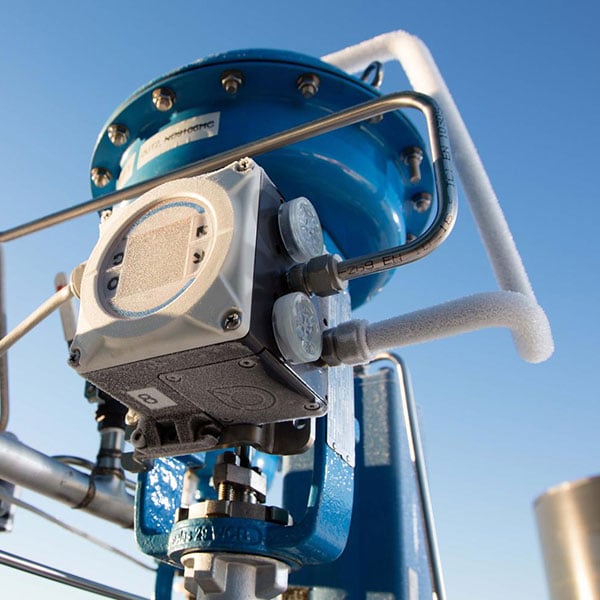The Role of Control Valves in Fluid Circulation Monitoring Equipment
The Role of Control Valves in Fluid Circulation Monitoring Equipment
Blog Article

Maximize Energy Savings and Convenience With Advanced Building Automation Controls
In the world of modern-day design and center administration, the assimilation of advanced structure automation controls stands as a critical advancement. By utilizing the power of automation, structures can adapt, respond, and progress in ways that were as soon as unthinkable.
Power Effectiveness Benefits
Energy performance advantages can substantially minimize power intake and operational costs in structures. By executing energy-efficient methods and innovations, building owners and operators can achieve considerable savings while additionally adding to ecological sustainability. Among the main advantages of enhancing power efficiency in buildings is the reduction of energy bills. Energy-efficient systems, such as sophisticated structure automation controls, can maximize making use of resources like heating, lighting, and air conditioning, leading to reduced energy expenditures in time.
In addition, boosted power effectiveness can prolong the lifespan of building devices and systems. By running more efficiently, heating and cooling systems, light, and other building elements experience much less wear and tear, leading to lowered maintenance and replacement expenses. Furthermore, energy-efficient buildings commonly regulate greater property worths and rental prices, giving long-term monetary benefits to proprietors.
Additionally, energy effectiveness can enhance resident convenience and productivity. Correctly regulated interior atmospheres with ideal lighting and thermal conditions develop a more favorable and enjoyable office, bring about boosted employee contentment and efficiency. On the whole, the power effectiveness benefits connected with advanced structure automation controls are multifaceted, encompassing cost savings, ecological stewardship, and occupant well-being.
Improved Convenience Control
Enhancing comfort control in structure settings needs an innovative integration of sophisticated automation systems for optimum resident health. By utilizing advanced structure automation controls, centers can customize the indoor atmosphere to meet the details requirements and preferences of passengers. control valves.
Improved convenience control goes beyond basic temperature changes. It consists of functions such as personalized setups, tenancy sensing units, and all-natural light utilization to produce a dynamic and responsive setting. By including these advanced controls, structures can not only enhance convenience yet likewise improve energy performance by optimizing system procedures based upon actual tenancy and use patterns. Inevitably, prioritizing resident comfort through sophisticated automation systems causes a much more enjoyable and healthier indoor environment.
Operational Performance Improvements

Furthermore, the implementation of real-time tracking and analytics tools makes it possible for building drivers to determine energy inadequacies and operational abnormalities quickly. By continually keeping track of power usage patterns and system efficiency metrics, modifications can be made in real-time to maximize energy intake and guarantee peak operational effectiveness. control valves. In addition, integrating need response approaches into building automation controls can better improve functional efficiency by dynamically changing power usage based upon grid conditions and prices signals
Indoor Environment Optimization
Effective interior environment optimization is a fundamental element of building automation controls, ensuring passengers' convenience and well-being while taking full advantage of energy cost savings. By using innovative sensing units and controls, building automation systems can constantly adjust and keep track of temperature, moisture degrees, air top quality, and air flow to develop an optimal indoor environment. Maintaining comfy and regular problems not just boosts owner fulfillment yet additionally enhances performance and total health.
Interior environment optimization additionally plays an essential function in energy effectiveness. By fine-tuning heating, air conditioning, and ventilation systems based on real-time information and occupancy patterns, constructing automation controls can significantly lower power usage - control valves. Applying techniques such as demand-controlled air flow and thermal zoning can assist reduce power waste while making sure that each area of the structure gets the required conditioning.

Lasting Setting Development
Building automation controls not only enhance indoor environment problems for energy effectiveness and occupant convenience however also lay the structure for developing a sustainable setting through critical management of sources and systems. By incorporating advanced structure automation technologies, such as sensing units, actuators, and smart software application, centers can readjust and keep track of power usage in real-time to decrease this hyperlink waste and decrease their carbon impact. These systems allow anticipating maintenance, recognizing potential problems prior to they escalate and enhancing tools efficiency to improve durability and performance.
Furthermore, sustainable setting production extends beyond energy monitoring to encompass water conservation, waste reduction, and interior air quality enhancement. Structure automation controls can manage water usage, detect leakages, and make certain proper waste disposal click to read practices, adding to total sustainability initiatives. In addition, by managing and checking air flow and filtering systems, these modern technologies boost owner health and productivity while decreasing energy usage connected with cooling and heating operations.
Conclusion
To conclude, progressed structure automation manages offer considerable advantages in terms of energy savings, convenience control, functional performance, interior climate optimization, and developing a lasting atmosphere. By executing these controls, buildings can achieve optimal performance while lowering power usage and improving occupant convenience. It appears that the use of advanced automation modern technology is critical in boosting building performance and developing a much more lasting future.
Power efficiency advantages can substantially decrease power usage and operational prices in buildings. On the whole, the energy performance benefits connected with advanced building automation controls are complex, including cost savings, ecological stewardship, and passenger well-being.
Additionally, integrating need feedback strategies into building automation controls can additionally enhance operational efficiency by dynamically changing energy usage based on grid conditions and prices signals.
Structure automation regulates not just optimize indoor climate problems for power efficiency and resident convenience yet also lay the foundation for producing a lasting setting through calculated monitoring of systems and sources.In conclusion, advanced building automation controls offer significant benefits in terms of power financial savings, convenience control, operational efficiency, indoor environment look at here now optimization, and creating a sustainable setting.
Report this page